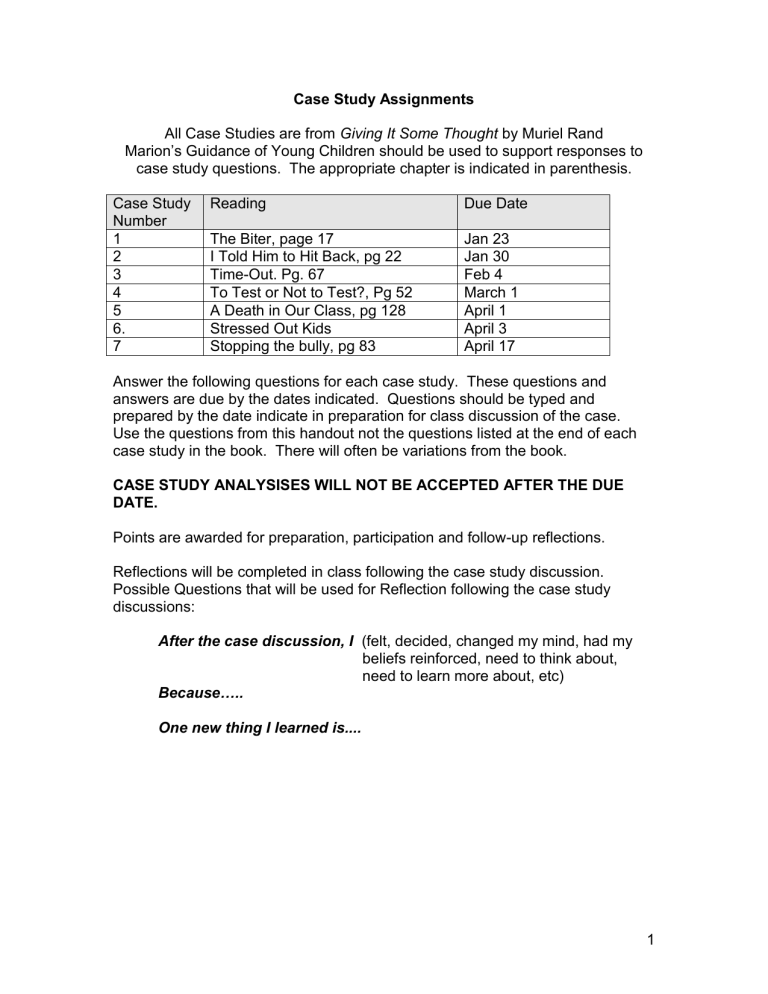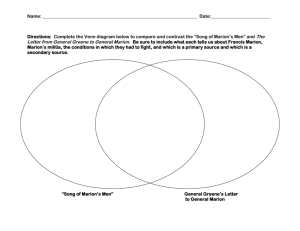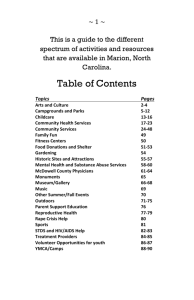Case Study Assignments

1
2
3
4
Case Study Assignments
All Case Studies are from Giving It Some Thought by Muriel Rand
Marion’s Guidance of Young Children should be used to support responses to case study questions. The appropriate chapter is indicated in parenthesis.
Case Study
Number
Reading Due Date
The Biter, page 17
I Told Him to Hit Back, pg 22
Time-Out. Pg. 67
To Test or Not to Test?, Pg 52
Jan 23
Jan 30
Feb 4
March 1
5
6.
7
A Death in Our Class, pg 128
Stressed Out Kids
Stopping the bully, pg 83
April 1
April 3
April 17
Answer the following questions for each case study. These questions and answers are due by the dates indicated. Questions should be typed and prepared by the date indicate in preparation for class discussion of the case.
Use the questions from this handout not the questions listed at the end of each case study in the book. There will often be variations from the book.
CASE STUDY ANALYSISES WILL NOT BE ACCEPTED AFTER THE DUE
DATE.
Points are awarded for preparation, participation and follow-up reflections.
Reflections will be completed in class following the case study discussion.
Possible Questions that will be used for Reflection following the case study discussions:
After the case discussion, I (felt, decided, changed my mind, had my beliefs reinforced, need to think about, need to learn more about, etc)
Because…..
One new thing I learned is....
1
Case 1 - The Biter (Marion, Chapter 2)
1. What do you think about the way Lena is handling the challenge of getting
Ellen to stop biting? Can you think of a different approach that might be more successful or other ideas that Lena could try?
2. Why do you think Ellen is biting? Do you think Lena is right? What do you know about this age that would help you understand Ellen? How can Jean
Pi aget’s theory help us understand? Erikson’s stages of psychosocial development?
3. How does Lena’s understanding of child development affect her view of this situation?
4 Discuss the development of selfcontrol and its relationship to Ellen’s biting
Behavior (see Chapter 2).
Case 2 - I Told Him to Hit Back (Marion, Chapter1)
1.
Whose philosophy is closer to your own, Miss Jacob’s or Mrs. Ortiz’s?
2. Do you think it is possible to have a different standard of behavior in the classroom from that at home? Will children adapt to a double standard, or will they get confused? What evidence do you have from your own experiences as a child to support your view?
3. What parenting styles do you see in Mrs. Ortiz? Miss Jacobs? What rationale can you use to make this conclusion?
4. When parents and teachers have differences in philosophy and practice, what is the best way to proceed while keeping the child’s best interest in at heart? Should both sides compromise? What advice would you give Mrs.
Ortiz and Miss Jacobs?
2
Case 3 -Time Out, pg. 67 (Marion, Chapter 4)
1. Why do you think time-out is not working? Do you think that this method is effective? What are the positive and negative aspects of time-out?
2. Do you agree with Julissa that Teresa needs more caring than punishment? What do you think she means by this?
3. What suggestions do you have for teachers who work together but have different views of discipline? How can such differences be resolved?
Should they be resolved? Why or why not?
4. Using the positive discipline strategies outlined in Marion, Chapter 4, what would you suggest as positive strategies to manage Teresa’s behavior?
Case 4 - To Test or Not to Test, pg. 52 (assessment assigned readings)
1. What are the pros and cons of using standardized testing in early childhood (refer to articles on assessment).
2 What are some alternatives to standardized testing? What would you do to convince parents that other forms of assessment are more appropriate
That standardized testing?
3. What advice would you give these teachers and parents as they prepare a proposal for assessment alternatives to present to the school board?
What should they include? What resources will they need?
3
Case 5 - A Death in Our Class, pg. 128 (Marion, Chapter 7)
1. What should Mrs. Berman say to Sandra? What alternatives can you think of to do or say in this situation?
2. From your understanding of child development, what is a typical four-yearolds understanding of death? How does knowing this help you prepare for the childr en’s needs?
3. What role should religion play in a nonsectarian school such as this one?
Is it possible or appropriate to avoid discussing religious ideas, especially when dealing with death? Is it possible to discuss religious ideas while still respecting a diversity of beliefs?
4. What support do children need to deal with the death of a classmate?
What signs of stress might the teacher watch for and what specific actions might she take to help the children with their feelings?
Case 6 - Stressed Out Children, pg. 131 (Marion, Chapter 7)
1. What do you think Margartia means by stress behaviors? What would you look for if you were going to observe stress behaviors?
2. Define resilience. What do you think makes the difference in more resilient children’s lives? How can Erikson’s (think about this one!) ideas help us understand this problem?
3. What would you do as a teacher to help these children deal with the stress in their lives? What could you do to help the stress behaviors in the classroom?
Case 7 - Stopping the Bully, pg. 83 (Marion, Chapter 8 and 9)
1. What kind of aggression is Ryan using? Explain your answer.
2. What advice do you have for Mike about getting Ryan to stop bullying?
3. What do you think about the strategies he has tried so far? Why do you think they have been ineffective?
4. How can Mike work with Ryan’s parents to come up with some new strategies? What would you recommend for new strategies?
4







